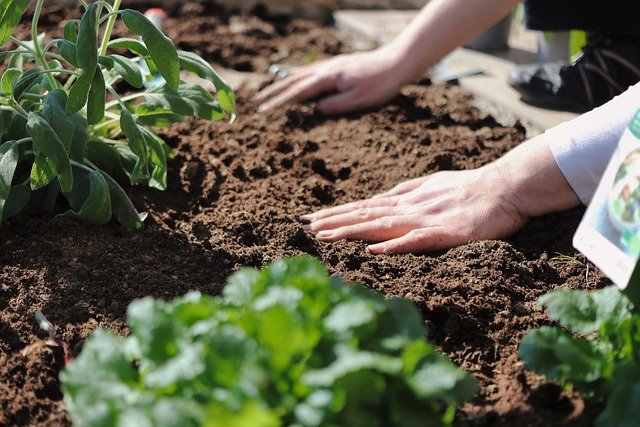
Organic gardening is a rewarding and sustainable way to cultivate healthy plants and nutritious produce. However, achieving optimal results with organic fertilizers requires a solid understanding of your soil’s needs. Soil testing is a crucial step that provides valuable insights into soil composition, nutrient levels, and pH balance, enabling you to make informed decisions about fertilization. Here’s a comprehensive guide for North American readers on the importance of soil testing for organic fertilizers.
1. Why Soil Testing Matters
Understanding Soil Composition:
- Nutrient Levels: Soil testing reveals the concentrations of essential nutrients like nitrogen (N), phosphorus (P), and potassium (K), as well as trace elements like magnesium, calcium, and sulfur.
- pH Balance: The pH level of the soil affects nutrient availability and overall plant health. Most plants prefer a slightly acidic to neutral pH (6.0-7.0).
Customized Fertilization:
- Targeted Applications: Soil testing allows you to apply the right type and amount of organic fertilizers based on the specific needs of your soil and plants.
- Avoiding Over-Fertilization: Prevents the excessive application of fertilizers, which can lead to nutrient imbalances, soil toxicity, and environmental harm.
Improving Plant Health:
- Optimal Growth: Ensures that plants receive the necessary nutrients for robust growth, improved disease resistance, and higher yields.
- Enhanced Soil Health: Promotes a balanced and healthy soil ecosystem, supporting beneficial microbes and improving soil structure.
2. How to Conduct Soil Testing
DIY Soil Testing Kits:
- Availability: Widely available at garden centers, nurseries, and online retailers.
- Components: Typically include reagents and color charts to test for pH and nutrient levels.
- Usage: Follow the instructions to collect soil samples and conduct tests at home.
Professional Soil Testing Services:
- Extension Services: Many local agricultural extension offices offer soil testing services.
- Private Labs: Numerous private laboratories provide comprehensive soil testing and detailed reports.
- Procedure: Collect soil samples following the lab’s guidelines and send them for analysis.
3. Collecting Soil Samples
Timing:
- Seasonal Considerations: Conduct soil tests in early spring or fall for the most accurate results.
Sampling Method:
- Tools: Use a clean trowel or soil probe, and a bucket for mixing samples.
- Depth: Collect samples from the root zone, typically 6-8 inches deep for garden beds and 3-4 inches deep for lawns.
- Sampling Pattern: Take multiple samples from different areas of the garden to get a representative composite sample.
Preparation:
- Mixing: Combine the soil samples in a clean bucket and mix thoroughly.
- Drying: Air-dry the soil samples if required by the testing method or lab.
- Packaging: Place the mixed soil sample in a clean, labeled container or bag for testing.
4. Interpreting Soil Test Results
Nutrient Levels:
- Macronutrients: Assess the levels of nitrogen, phosphorus, and potassium, as well as any deficiencies or excesses.
- Micronutrients: Check for trace elements like magnesium, calcium, and sulfur, which are crucial for plant health.
pH Balance:
- Optimal Range: Identify if the soil pH falls within the ideal range for your plants.
- Adjustments: Determine if adjustments are needed to raise or lower the pH.
Recommendations:
- Fertilizer Choices: Select appropriate organic fertilizers based on the test results, such as compost, manure, bone meal, or green manure.
- Application Rates: Follow recommended application rates to ensure balanced nutrient supply.
5. Adjusting Soil Based on Test Results
Organic Fertilizers:
- Compost: Rich in organic matter and nutrients, improves soil structure and fertility.
- Manure: Provides a balanced mix of nitrogen, phosphorus, and potassium.
- Bone Meal: High in phosphorus, supports root and flower development.
- Blood Meal: Rich in nitrogen, promotes leafy growth.
- Green Manure: Adds organic matter and nutrients, improves soil structure.
pH Adjustments:
- Lime: Raises soil pH (makes it more alkaline) and adds calcium and magnesium.
- Sulfur: Lowers soil pH (makes it more acidic) and adds sulfur.
- Organic Matter: Adding compost and organic materials can help buffer soil pH and improve overall soil health.
6. Benefits of Regular Soil Testing
Consistent Monitoring:
- Seasonal Changes: Regular soil testing helps track changes in soil composition and nutrient levels over time.
- Adjustments: Allows for timely adjustments to fertilization and soil management practices.
Sustainable Gardening:
- Environmental Protection: Reduces the risk of nutrient runoff and pollution.
- Resource Efficiency: Ensures efficient use of organic fertilizers, minimizing waste and cost.
Improved Crop Yields:
- Optimal Conditions: Provides plants with the ideal growing conditions, leading to healthier plants and higher yields.
- Enhanced Quality: Improves the quality and flavor of fruits and vegetables.
Soil testing is an essential practice for any organic gardener aiming to optimize plant health and productivity. By understanding the specific needs of your soil, you can make informed decisions about fertilization and soil management, ensuring that your plants receive the nutrients they need to thrive. Regular soil testing not only promotes sustainable gardening practices but also enhances the overall health and vitality of your garden. Embrace the importance of soil testing and enjoy the benefits of a vibrant, productive organic garden. Happy gardening!
